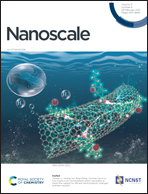On the design, functions, and biomedical applications of high-throughput dielectrophoretic micro-/nanoplatforms: a review
Abstract
As an efficient, rapid and label-free micro-/nanoparticle separation technique, dielectrophoresis (DEP) has attracted widespread attention in recent years, especially in the field of biomedicine, which exhibits huge potential in biomedically relevant applications such as disease diagnosis, cancer cell screening, biosensing, and others. DEP technology has been greatly developed recently from the low-flux laboratory level to high-throughput practical applications. In this review, we summarize the recent progress of DEP technology in biomedical applications, including firstly the design of various types and materials of DEP electrode and flow channel, design of input signals, and other improved designs. Then, functional tailoring of DEP systems with endowed specific functions including separation, purification, capture, enrichment and connection of biosamples, as well as the integration of multifunctions, are demonstrated. After that, representative DEP biomedical application examples in aspects of disease detection, drug synthesis and screening, biosensing and cell positioning are presented. Finally, limitations of existing DEP platforms on biomedical application are discussed, in which emphasis is given to the impact of other electrodynamic effects such as electrophoresis (EP), electroosmosis (EO) and electrothermal (ET) effects on DEP efficiency. This article aims to provide new ideas for the design of novel DEP micro-/nanoplatforms with desirable high throughput toward application in the biomedical community.

- This article is part of the themed collection: Recent Review Articles


 Please wait while we load your content...
Please wait while we load your content...